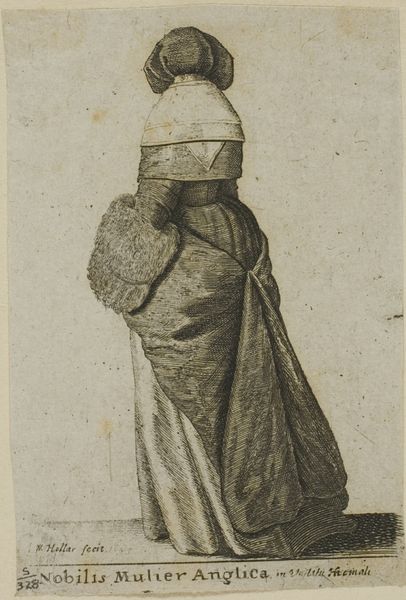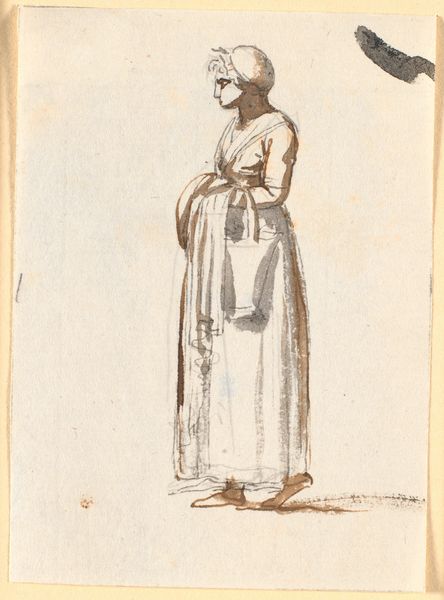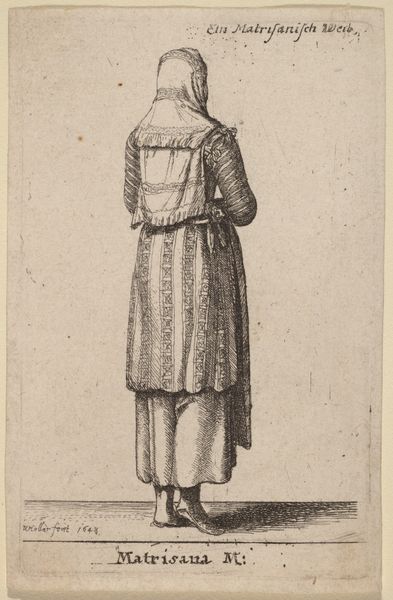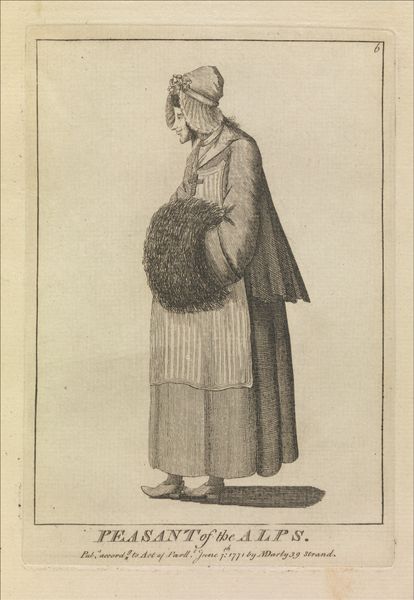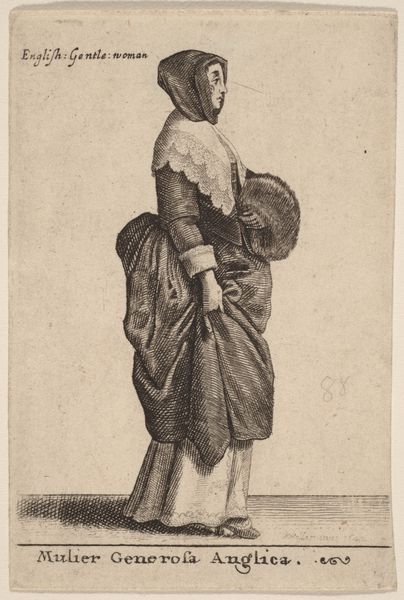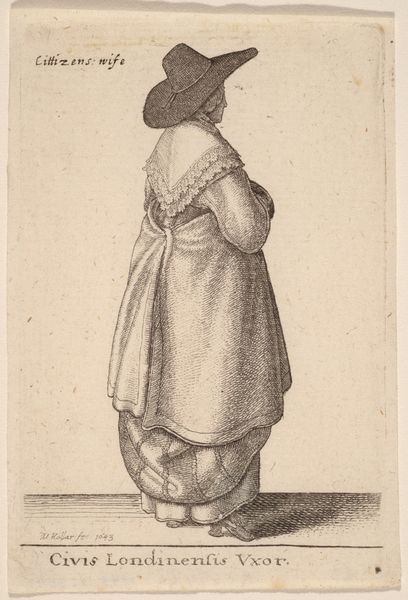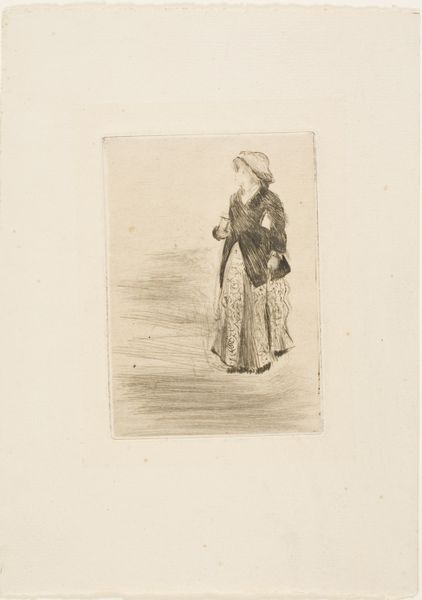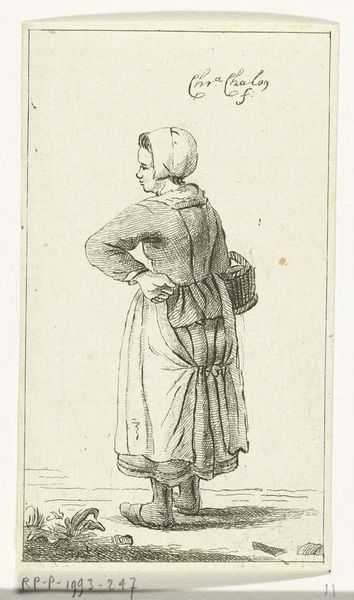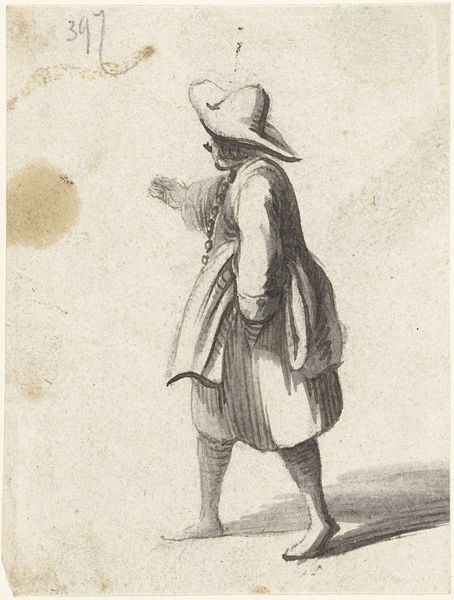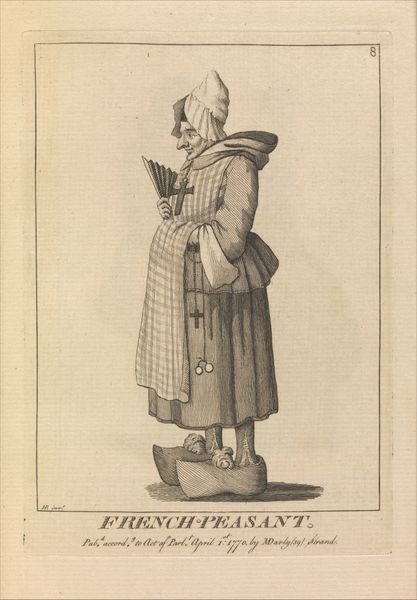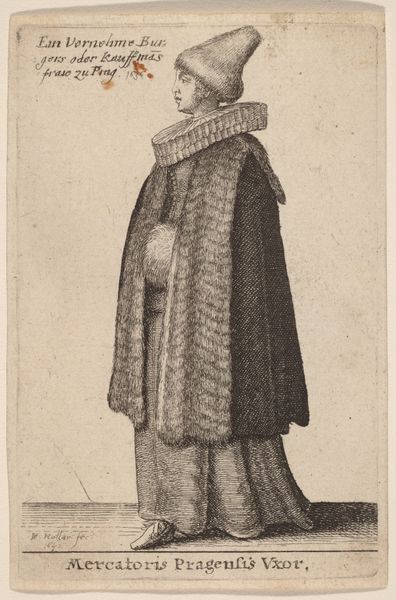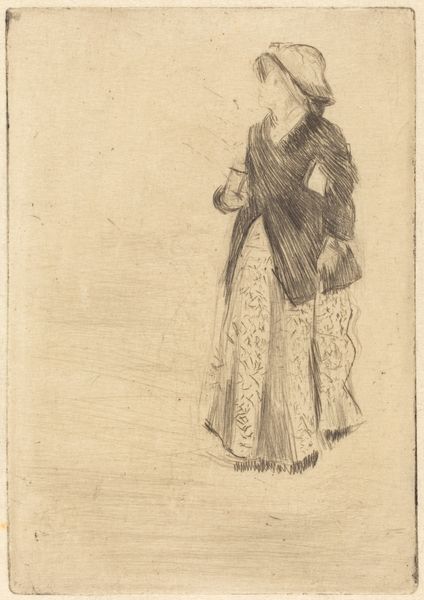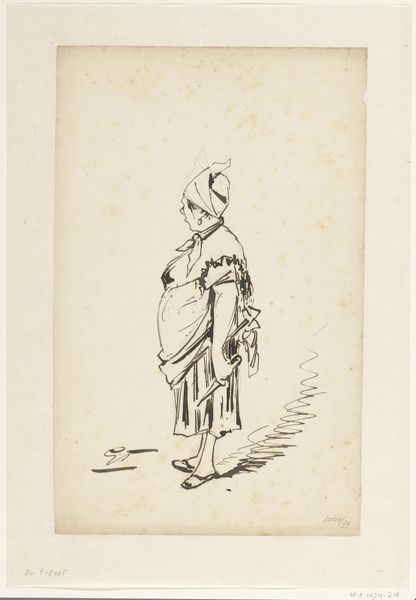
drawing, print, engraving
#
portrait
#
drawing
# print
#
history-painting
#
engraving
Dimensions: height 298 mm, width 180 mm
Copyright: Rijks Museum: Open Domain
Editor: This is "Standing Man in Medieval Clothing," a drawing and engraving by Eduard Augustyns, from 1888. The figure is shrouded, mysterious almost. What stories do you see embedded in this image? Curator: He turns his back to us, hiding his face, a common trope in art to invite introspection. His garb, suggestive of an earlier time, could signify an archetype – a scholar, a pilgrim, or a figure bound by tradition. It hints at a connection to something ancient and enduring. Do you feel he’s rooted in a specific moment, or is he something more universal? Editor: That's interesting, I hadn’t thought of him as universal. His posture is almost defiant. Do you think that contributes to a particular narrative or symbolism? Curator: It could. Consider how the drape of his clothing obscures yet also defines him. This interplay of revelation and concealment echoes our complex relationship with history itself. We yearn to understand, yet are always at a distance, reconstructing the past through fragments and symbols. This figure might then represent memory, fragmented and mediated. Editor: So, not just a historical painting, but also a commentary on how we relate to history? Curator: Precisely! The engraving’s stark lines emphasize the weight of inherited culture, the responsibility of carrying historical memory. Consider what it meant to Augustyns in 1888 to revisit the Medieval, that act in itself carries its own weight, a dialogue through time. Editor: I never considered how much the act of looking back shapes our present understanding. It changes how I see the engraving; it's a more complex dialogue with time than I initially perceived. Curator: Indeed, images like these are never just representations, but rather embodiments of cultural memory constantly reinterpreted.
Comments
No comments
Be the first to comment and join the conversation on the ultimate creative platform.
